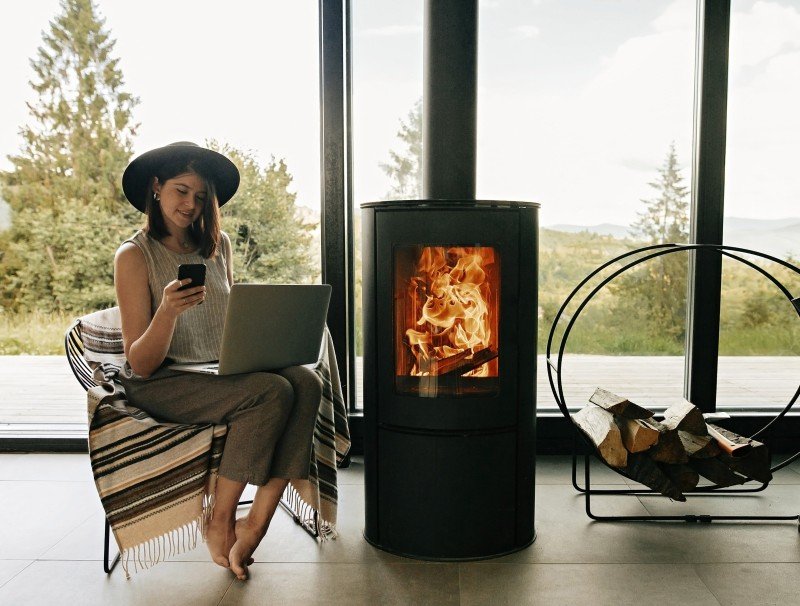Three Greatest Moments In Fire Place To Buy History
Finding the Perfect Fireplace to Buy: A Comprehensive Guide
Fireplaces have long been a symbol of warmth, convenience, and home. Today, they serve not just as functional heating sources but also as striking design aspects that raise the aesthetic of any living area. With the proliferation of styles, fuels, and technological features, purchasing a fireplace can feel daunting. In fireplacesandstove , we will check out different kinds of fireplaces, the factors to consider for purchasing, and the advantages of having one in your house.
Types of Fireplaces
Before diving into how to pick the right fireplace, it's necessary to understand the various types available on the market. Below is an in-depth contrast table of the most common kinds of fireplaces:
Type
Fuel Source
Setup
Upkeep Needs
Common Cost Range
Wood-Burning
Wood
Needs chimney
High; regular cleansing
₤ 2,500 – ₤ 5,000
Gas Fireplace
Natural gas or propane
Vented or ventless
Medium; annual checkup
₤ 1,500 – ₤ 4,000
Electric Fireplace
Electrical power
Plug-in or integrated
Low; periodic dusting
₤ 200 – ₤ 3,500
Pellet Stove
Wood pellets
Needs venting
Medium; regular cleaning
₤ 2,000 – ₤ 4,000
Ethanol Fireplace
Bioethanol
No venting needed
Very low; tidy glass regularly
₤ 300 – ₤ 2,500
1. Wood-Burning Fireplaces
Wood-burning fireplaces are the classic option, evoking a standard atmosphere. Nevertheless, they require proper chimney setup and upkeep to guarantee safety. The cost can be on the higher side due to these needs.
2. Gas Fireplaces
Gas fireplaces use convenience and effectiveness. They can be vented or ventless, depending upon your area. While gas choices tend to be costlier upfront, they usually need less upkeep than wood-burning designs.
3. Electric Fireplaces
Electric fireplaces are flexible and can be positioned throughout the home, as they only require a power outlet. They can easily act as a supplementary heating source and be available in various designs, from wall-mounted to freestanding systems.
4. Pellet Stoves
Pellet ranges burn compressed pellets made from wood and other materials. They need a power supply for operation and generally have a higher initial cost however deal fantastic fuel efficiency and ease of usage.
5. Ethanol Fireplaces
Ethanol fireplaces are modern and stylish, functioning without a chimney. They offer a clean-burning choice for those who value looks over heat output. Nevertheless, they might not appropriate for heating bigger areas.
Key Considerations When Purchasing a Fireplace
When picking a fireplace, think about the following aspects:
1. Home Size and Layout
- Open Spaces: Large open locations benefit from effective systems like wood or pellet ranges.
- Smaller Rooms: Electric or ethanol models may be sufficient for intimate spaces.
2. Fuel Source
- Select based upon ease of access to fuel types (wood, gas, electric) and your way of life (upkeep, benefit).
3. Heating Needs
- Determine the heating requirements for your space. Bigger fireplaces may be necessary for bigger spaces.
4. Regional Regulations
- Ensure your fireplace adheres to local building regulations and policies, as some districts may impose constraints on specific types.
5. Aesthetic Appeal
- Select a style and finish that matches your home decoration, whether it's standard, modern, or rustic.
Benefits of Having a Fireplace
The advantages of having a fireplace in your home are many. Here are some crucial advantages:
- Comfort and Coziness: Fireplaces produce a warm environment, best for gatherings or peaceful nights.
- Increased Property Value: A well-placed and functional fireplace can improve your residential or commercial property's market price.
- Alternative Heating Source: Fireplaces provide supplemental heating throughout cold weather, which can assist lower heating expenses.
- Aesthetic Centerpiece: Fireplaces often function as the focal point in a space, adding character and elegance to the home.
FAQ Section
Q1: How do I determine the very best fireplace for my home?
A: Assess your heating requirements, area size, chosen fuel source, and aesthetic choices to pick the very best option.
Q2: Are gas fireplaces more secure than wood-burning ones?
A: Gas fireplaces often have less safety concerns due to their controlled combustion and easier maintenance, however correct installation is still crucial.
Q3: Can I install a fireplace myself?
A: While electric fireplaces are appropriate for DIY installation, gas, and wood-burning designs require professional setup to ensure security and compliance with local codes.
Q4: What is the maintenance required for each kind of fireplace?
A:
- Wood: Regular cleansing of ash and creosote from chimneys.
- Gas: Annual check-up to examine venting and connections.
- Electric: Dusting and examining for electrical concerns.
- Pellet: Cleaning out pellets and ash sometimes.
- Ethanol: Simple cleansing of the burner and glass.
Q5: How much will my heating bills increase with the addition of a fireplace?
A: This can differ significantly. Fireplaces generally supply additional heating and might reduce your overall expenses, however specifics depend upon usage and insulation.
Choosing the best fireplace to buy entails comprehending your home's requirements and individual preferences. Whether you go with the timeless appeal of a wood-burning fireplace or the modern-day benefit of an electrical system, there's a fireplace that can fit effortlessly into your home. By thinking about the various types, installation requirements, and advantages discussed in this guide, you're fully equipped to make an educated choice and take pleasure in the heat and design that a fireplace can bring to your living environment. Delighted fireplace shopping!
